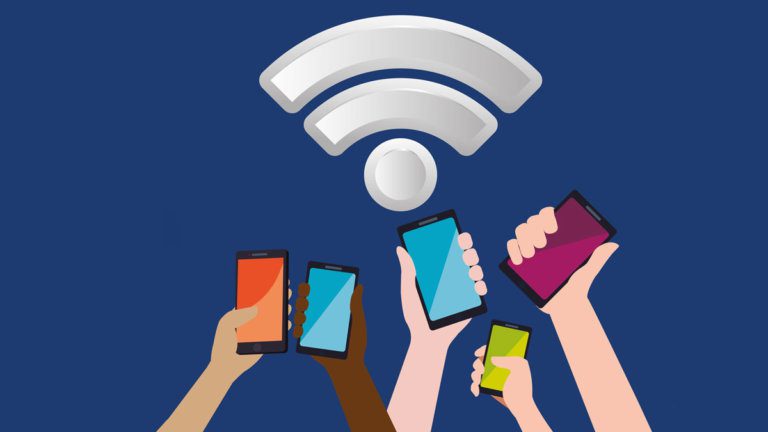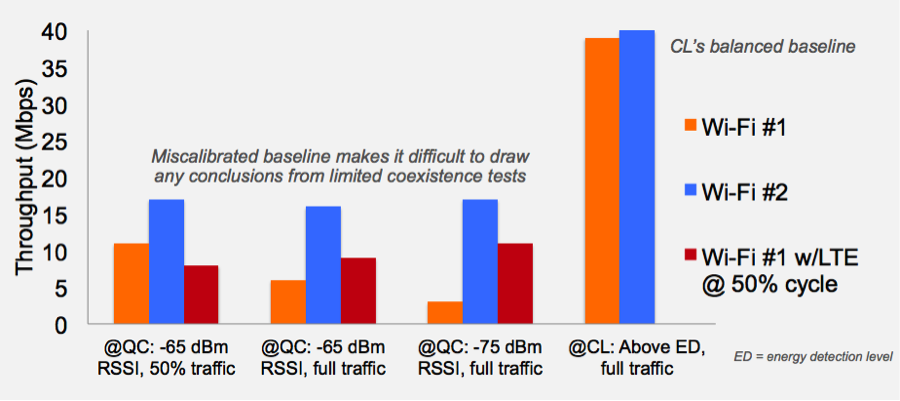Consumer
Fair LTE-U Coexistence Far From Proven In CableLabs / Qualcomm Testing

CableLabs has been working hard to ensure that the introduction of LTE into unlicensed spectrum is a win for wireless broadband, and that it does not disrupt the Wi-Fi services that consumers have come to rely on. We have covered in prior posts why that is a challenge, since LTE-U can take advantage of Wi-Fi’s inherent politeness. Here we will review recent technical work we did with a major proponent of LTE-U, Qualcomm Technologies, and explain why that effort only reinforces our concerns.
In brief, we observed that current LTE-U prototype equipment is quite primitive — it is really just in mock-up state at this point — and incapable of demonstrating important coexistence features. The vendor-promised features, most of which are not required or even identified by the LTE-U Forum in its latest specifications, are not yet working to enable fair and reliable coexistence and confidence in testing. In addition, we found that claims of its ability to share fairly rest on a seemingly faulty understanding of how Wi-Fi shares spectrum. For CableLabs, this reinforces the need for a collaborative and open standards development process.
The Wi-Fi community has long sought the same collaborative standards development process for LTE-U that LAA has enjoyed (License Assisted Access LTE is the flavor of unlicensed LTE being developed in the mobile standards body, 3GPP). But in the absence of LTE-U standards development, CableLabs has engaged directly with the promoters of LTE-U in an attempt to do the fundamental research required to find coexistence solutions. Far from converging on solutions, however, our work to date on LTE-U has raised more questions than answers.
Lessons Learned with Qualcomm’s LTE-U
CableLabs recently concluded a brief technical engagement at Qualcomm’s campus in San Diego, which was preceded by a lengthy negotiation of what we would be allowed to test on site. Ultimately, the scope of the plan was much narrower than our guidance and focused on a limited set of basic coexistence tests. It certainly was not the fulsome research that we recommended and is required to address the concerns of Wi-Fi technologists, which we summarized in a presentation to the Wi-Fi Alliance last week.
We began this limited test hoping that we would be able to independently validate the definitive statements of LTE-U proponents that it has been ‘proven to coexist’, and is ‘more friendly to Wi-Fi than Wi-Fi is to itself’.
Unfortunately, our main conclusion from the three weeks we spent on site at Qualcomm is that there is no basis for definitive technical statements about LTE-U coexistence. The reason for this is surprisingly simple: LTE-U is in a prototype phase of development, and does not possess the features that its proponents have noted are important to coexistence.
For instance, Qualcomm has noted that their LTE-U solution will sense the spectrum for Wi-Fi activity and adjust its duty cycle ‘on’ time for rapidly changing congestion conditions. But that is not what we were shown. What we saw was an LTE-U prototype that must have its duty cycle manually programmed; it has no adaptation capabilities at all. There were other issues as well: For example, the equipment did not natively use the 5 GHz band that is targeted for LTE-U, and it only supported a single user device. We will refrain from going on at length here, but as is apparent in the photo below, LTE-U requires substantial further development. In short, we were surprised to see that the state of the art plainly won’t work in the real world, despite assurances to the contrary and claims of comprehensive testing.
Importance of a Common Research Framework
Since LTE-U equipment is not mature, it should come as no surprise that coexistence research leaves much to be desired as well. Statements that LTE-U is ‘more friendly to Wi-Fi than Wi-Fi is to itself’ necessarily rely on a baseline understanding of how Wi-Fi shares the spectrum with other Wi-Fi networks. But, in our three weeks at Qualcomm, engineers spent the majority of the time grappling with that crucial baseline information. The test setup at Qualcomm was uncontrolled and provided strangely imbalanced measurements. Afterwards, a CableLabs engineer replicated the setup at our Colorado facilities with the same make of Wi-Fi equipment, and within a half hour obtained balanced results, suggesting that problematic baseline measurements were somehow endemic to Qualcomm’s research environment. CableLabs and its members regularly test, configure, and operate Wi-Fi networks, and the behavior we observed on-site in San Diego seems quite out of the ordinary. Selected baseline measurements are shown in Figure 2 below, including the expected balanced baseline we observed in our Colorado lab.

Figure 2: Imbalanced Wi-Fi baseline behavior in Qualcomm research not observed in follow-on CableLabs work
This highlights the fundamental problem with the LTE-U coexistence research done to date: There is no common technical framework in which stakeholders are working, which makes it very difficult, if not impossible, to interpret research results across studies. This is apparent in our limited work with Qualcomm, and in Qualcomm’s prior studies, which also reflect baseline imbalances and call into question the research conclusions of LTE-U proponents.
Since we spent most of our time at Qualcomm working to diagnose apparent problems with the research environment, we did not come close to executing against the already modest test plan developed at the outset. We did however take some limited measurements of Wi-Fi behavior in the presence of LTE-U (which was tuned to 50% duty cycle ‘on’ time, so is only a narrow representation of possible real-world LTE-U configurations).
As seen in Figure 3 below, the impact of LTE-U depends on what your comparison point is: To conclude that LTE-U coexists better than Wi-Fi, one would need to lower the bar as much as possible — using an imbalanced baseline and referencing only the lower end in the analysis. This would clearly be a skewed approach, and even when doing so, it still doesn’t tell a conclusive story — reference the first case in the figure below, where the presence of LTE-U degrades Wi-Fi more than either baseline case. We would submit that the better approach is to diagnose the problems with the baseline measurements, rather than using unexplained results to justify definitive conclusions.

Figure 3: LTE-U coexistence not reliably determined
Furthermore, the in-home research detailed in a recent blog post by our principal architect, Jennifer Andreoli-Fang, made it clear that LTE-U is likely to have a disproportionately negative impact to Wi-Fi when the baseline is properly calibrated. An open standards process with common research methods is clearly needed to drive greater consistency and confidence in results.
We certainly hope that Qualcomm’s LTE-U solution will move from prototype to product in the near future, so that the Wi-Fi community can attempt to validate its coexistence efficacy in an open and comprehensive fashion. But that would only be one necessary step on the path toward equitable spectrum sharing. As we have detailed before, the LTE-U Forum coexistence specification leaves substantial room for different vendor and carrier approaches, which are likely to do disproportionate harm to Wi-Fi.
While this quite limited testing at Qualcomm’s facilities raised more questions than answers for us, CableLabs remains fully committed to rectifying the shortcomings in unlicensed LTE coexistence. Indeed, we have seen more hopeful progress in the development of the global standard form of the technology, LAA-LTE, which we are cautiously optimistic is on a path to coexist well. The more aggressive approach taken by LTE-U clearly poses significant challenges, but we see promise in the open standards process and the particular technical choices of LAA as the basis for a more effective and comprehensive solution.
Reliable coexistence in unlicensed spectrum requires a broadly supported agreement on specific solutions. That is why a collaborative, open standards development process is so important — that is how Wi-Fi is developed. Its success is self-evident in the marketplace.
Rob Alderfer is Vice President of Technology Policy at CableLabs.



